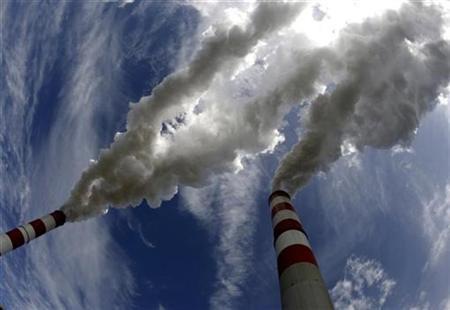
Biodiversity loss due to air pollution is mainly attributed to three distinct categories: greenhouse gases, chemical imbalances, and aerosols. Today, societies demand more and more resources, services, and products that are readily met by companies and businesses all around the world. However, this competitive global market forces companies to make decisions based on cost effectiveness. In many cases, this leads to pollution or ecologically damaging products. The sectors that contribute most to air pollution are transportation, energy production, agriculture, and industry.
The main contributors to the greenhouse effect and global climate change are carbon dioxide and methane. Global levels of carbon dioxide have risen by as much as 100 ppm in the last 60 years (NASA, 2011) while methane levels have doubled to nearly 1800 ppb (Alvim, C. F., 2011) . There has also been an average increase in global temperature of 1.6 degrees F (NASA, 2011) with warming more prominent towards the poles. Currently, the atmospheric concentration of carbon dioxide is approximately 390 ppm. It is predicted that at 500 ppm it would be impossible to maintain the polar ice caps and that 450 ppm is the highest sustainable level of carbon dioxide (Dresner, 2008). In the meantime, these slight changes in temperature have altered weather patterns for many ecosystems and will continue to do so. Rain patterns that are currently focused over certain regions may shift, leaving entire regions without the resources they depend upon. Recent studies have also shown that an increase in temperature will lead to an increase in the severity and frequency of severe storms (United States Global Change Research Program, n.d.). This poses a threat not only to lives and property of humans, but to biodiversity as well.
 |
Through naturally occurring processes, carbon dioxide readily dissolves into water to form carbonic acid; increased concentrations of atmospheric carbon dioxide will only encourage this reaction and cause an increase in ocean acidity. Many delicate marine ecosystems have had, and will continue to have, trouble adapting to such changes. Researchers have shown that many corals reefs around the world are failing, leading to a huge loss in biodiversity; the earth has already lost 25 percent of its coral reefs (Planetary Coral Reef Foundation, n.d.). Many scientists believe that by the year 2050, only 5 percent of the current coral population will remain, even under the lowest predicted temperature increases (Channel News Asia, n.d.). Considering that corals reefs provide shelter for as much as 25 percent of the ocean's inhabitants (Dive the World, n.d.), or approximately 2 million marine species (World Wildlife Fund, n.d.). In other words, the sea's biodiversity would suffer from serious desecration. With respect to the human population, the loss of coral reefs would result in the loss of a 375 billion dollar industry and 10 percent of the world's food sources (Planetary Coral Reef Foundation).
Chemical imbalances come from toxic compounds not considered under the “greenhouse gas” umbrella. Sulfur oxides and nitrogen oxides are primarily responsible for the formation of acid rain and creation of visible smog. Acid rain has a significant effect on trees and plants because it damages leaves and increases the toxicity of the soil (EPA, 2010). In addition, the National Surface Water Survey conducted a study to determine the effects of acid rain on bodies of water and found that 75 percent of lakes are deemed acidic (EPA, 2010). Carbon monoxide is a very toxic chemical that is produced from the incomplete burning of fossil fuels; it does have slight greenhouse properties but its main impact involves its toxicity. In respiratory animals, carbon monoxide is especially harmful because it prevents blood from carrying oxygen by reacting with hemoglobin (Bailey), thus presenting great health risks to both animals and humans.
Aerosols are comprised of particulate matter suspended in air; many of them occur naturally, however approximately 10 percent are anthropogenic. The major artificial contributors to aerosols are burning of fossil fuels and industrial processes. Aerosols have a huge negative effect on ecosystems because the particles can enter water systems or the lungs of respiratory organisms. This poses not only a threat to biodiversity, but to humans as well. Studies have shown that cities with high aerosol concentrations have high mortality rates due to respiratory failure. Vancouver conducted a study of their medical records and found that if the concentration of particulate matter were reduced by 1 percent, they would save 29 million USD in hospital admittances due to respiratory illness (British Colombia Lung Association, 2005). Aerosol pollution also causes aquatic biodiversity loss because particles in the atmosphere lead to acid rain, which changes the pH levels in lakes and streams (Cho, 2011).